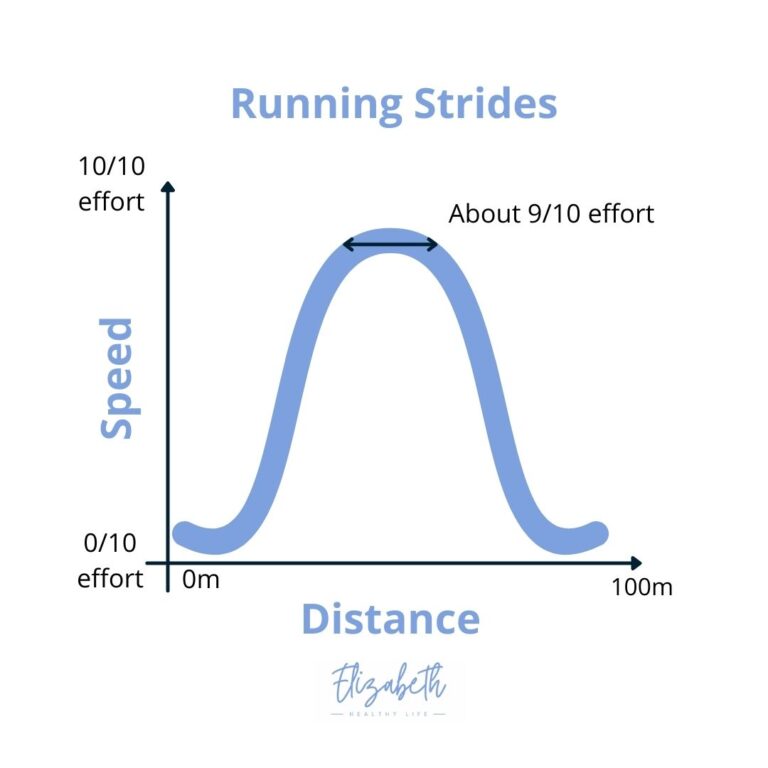Training Plans For Runners: 5 Key Factors Of Effective Training Plans
There’s no doubt that one factor of becoming a stronger runner is following a proper training plan. No two runners are alike and therefore, no two training plans are identical. There are many factors that go into creating effective training plans for runners. Make sure the plan you’re following includes these five components so you are running healthy and at your best!
Frequently Asked Questions – Training Plans for Runners:
What is a good running training plan?
Honestly, this answer varies from person to person because there is no “one size fits all” when it comes to running. A training plan is “good” and effective if it is a plan that is safe and written specifically for YOU! There are many online running plans available, however, the best training plans for runners are those that keep a person healthy and are customized for them and their running goals. Because every runner is different, your training plan should first reflect your running history, current fitness, running goals, and personal schedule.
How do you create a running training plan?
As a certified running coach, I take running history, current fitness, running goals, and personal schedule into account while creating training plans. After identifying a person’s goal and measuring their current fitness, I add different types of runs to their plan that will slowly build upon their fitness. Over time, the training load will continue to increase and safely guide the runner towards their goal.
How do you structure a training week for runners?
Again, this depends on the runner! First, I figure out which day(s) are going to be rest days and work around those. Rest days are essential and non-negotiable, so those are scheduled first.
Next, if a runner’s plan includes long runs, I figure out which day it will be and make sure that the days preceding and following it are either easy days or rest days, not other hard effort runs. If a runner has both a long run and a speed workout, I make sure those are both properly spaced out.
Then, I take the remaining miles and spread them throughout the rest of the week, being careful with how many miles are put on each day so the risk for injury remains low.
5 Key Components of Proper Training Plans for Runners:
1.) Training at your current fitness level
First and foremost, your training should be written at the fitness level you currently have.
For instance, let’s say you want to qualify for the Boston Marathon and need to run a sub 3:30 marathon (7:59 min/mile pace). However, your current fitness shows that a more appropriate goal marathon pace is around 8:45 min/mile. An effective and safe training plan for you is one that will focus on the 8:45 pace, not a 7:59 pace.
If a runner is training at a level that is too challenging, they are putting a significant amount of stress on the body, which can lead to injury, overtraining, and burnout.
2.) Easy effort running for at least 80% of training
It may seem backwards, but running at least 80% of your mileage at an easy effort will help you progress with your training. And remember, easy running isn’t a pace, it’s an effort. Pace will vary each day based on a multitude of factors, like hydration, weather, stress, fueling, mindset, and your running route. While running an easy effort, make sure it’s comfortable enough for you to hold a conversation or sing a song and the perceived effort is no higher than a 3 on a scale of 1-10.
Some benefits of easy effort running include:
- Building aerobic endurance
- Improving mitochondrial density
- Becoming a more efficient runner
- Improving capillary density
- Increasing mileage safely
3.) Incorporating rest days and cutback weeks
Your training is only as good as your recovery! For many runners, it can be easy to think that training effectively means running everyday, working hard week after week, running at your goal pace daily, and never taking some down time. In fact, it’s quite the opposite. Make sure your plan includes at least one complete rest day every 7 days and a cutback week every 3-5 weeks.
A rest day means you are not running, cross training, or strength training. Use the extra time to sleep in, go to bed earlier, take a nap and to not think about running. View rest days as both a physical and mental recharge.
A cutback week is a 7-day period with an intentional decrease in mileage and intensity. The main focus of a cutback week is rest and recovery, so if you need to cut a run short to get some extra sleep, do it! Your cutback week may still include a workout or hard effort run. If it does, there are likely fewer reps than usual and the paces may not be as challenging.
Read more about Recovery for Runners and best practices for rebuilding after a training run.
4.) Pushing yourself when the time is right
Pushing yourself in training looks differently from person to person. A hard effort run doesn’t mean you are running as fast as you can for as long as you can. In fact, increasing the intensity can look like:
- Building your long run distance – If someone is running their first marathon, the long runs are a top priority. Slowly increasing the long run builds time on feet and aerobic endurance, gives the runner opportunities to practice fueling, and helps boost confidence while progressing through marathon training. (Some items needed for a long run include a Hydration Running Vest and Body Glide).
- Expanding running increments if your plan is run/walk structured – Let’s say someone’s training is written in run/walk increments. Over time, slowly increasing their running increments and decreasing the walking increments pushes the runner to run further nonstop.
- Adding speed work – If you’ve been running at least 20 miles/week for the past few months and are not actively increasing mileage, increasing intensity may look like slowly adding speed work to your training. Grab my Introduction to Speed Work Guide if you are interested in adding speed work to your training.
5.) Working with a coach
Teaming up with a running coach can significantly elevate a person’s training. A coach has the knowledge and experience to create a training plan that will not only keep a runner healthy but safely push them to higher fitness levels.
Some of the many things your coach can do for you include:
- Writing appropriate training runs
- Helping you view your training through a different lens
- Adjusting your schedule as needed
- Answering questions
- Holding you accountable
- Cheering you on and encouraging you
If you’re following a free plan online, this can be tricky because there is no one there to turn to when you have a question. For instance, if you miss a few runs because of an illness or if you start feeling mentally burnt out, a coach is there to listen to how you’re feeling, make adjustments, and proceed in a way that is safe and still yields progress.
If you are interested in having a training plan written specifically for you, I’d love to help you! Read my Run Coaching Services page to learn about my coaching.
Recap of What Makes Effective Training Plans for Runners:
- Training at your current fitness level
- Easy effort running at least 80% of the time
- Incorporating rest days and cutback weeks
- Pushing yourself when the time is right
- Working with a coach
5 Principles of Becoming a Stronger Runner:
Eager to become a faster and stronger runner? I would love to help you reach your running goals! Email me at [email protected] or check out my Run Coaching Services page to learn more.
Comment Below:
If you’re following a training plan, does it include these 5 components? If not, which one is it missing?















